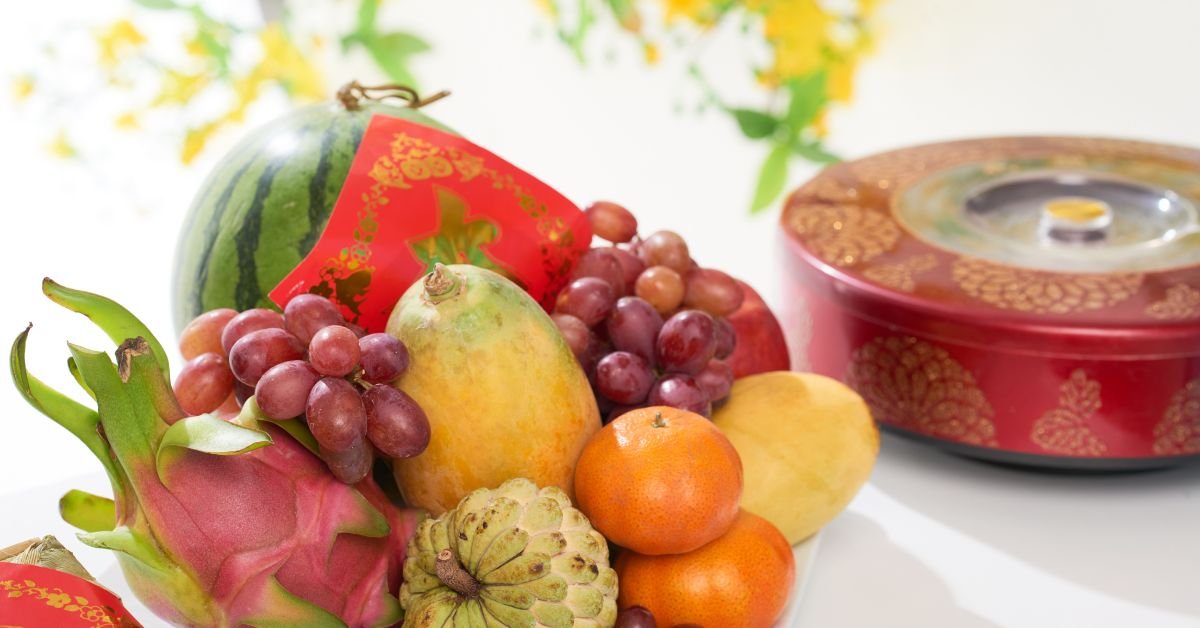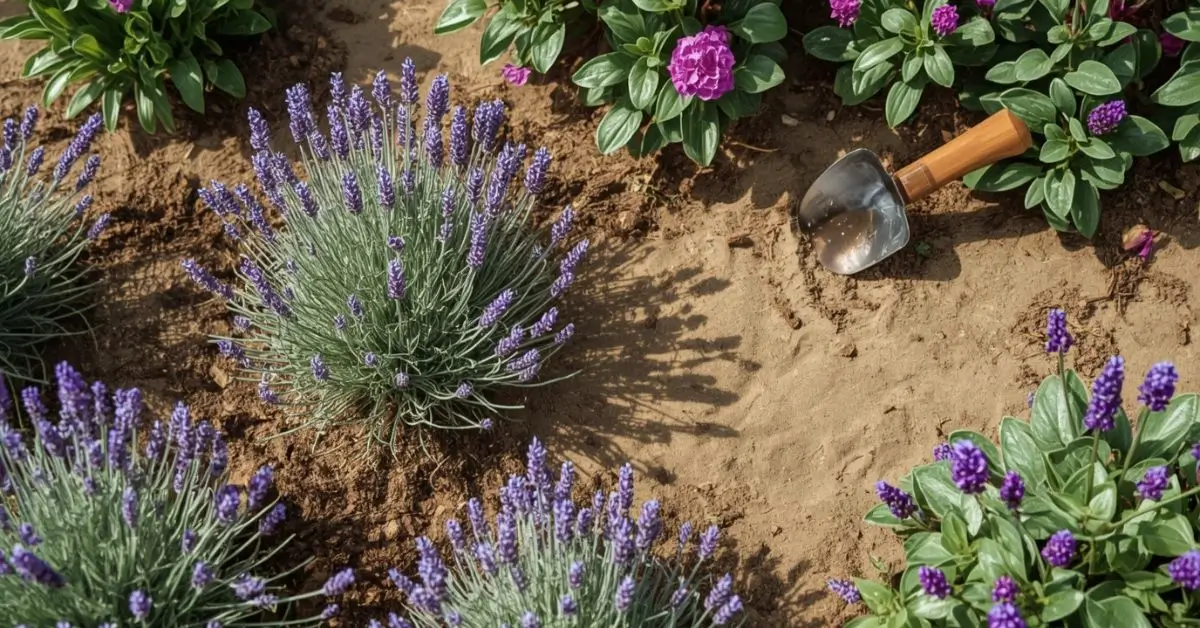BLOG
Exotic Delights: Exploring the World of Asian Fruits

Introduction: Nature’s Candy from the East Exotic Delights
Exotic Delights There’s something irresistibly fascinating about the diverse, flavorful world of Asian fruits. Whether you encounter them fresh at a bustling street market in Bangkok, or packaged and imported in a boutique grocery store halfway across the globe, these fruits offer a glimpse into the vibrant agricultural and culinary heritage of Asia
Tropical Treasures: A Journey Through Asia’s Fruit Belt
The tropical climate of Asia, particularly in countries like Thailand, Vietnam, the Philippines, and Indonesia, creates the perfect conditions for producing lush and flavorful fruits year-round.
In places like Thailand’s floating markets or the Philippines’ local roadside stalls, it’s common to find fruits like rambutan with its hairy red skin, or the striking purple mangosteen—often referred to as the “queen of fruits.” Jackfruit, with its spiky exterior and fleshy yellow pods, is not only used as a sweet fruit but also increasingly popular in vegetarian cuisine worldwide as a meat substitute.
More Than Taste: The Cultural and Medicinal Significance
Fruits in Asia are not only enjoyed for their flavor but are deeply woven into the fabric of traditional medicine and cultural rituals. In Traditional Chinese Medicine (TCM), fruits such as longan are used to boost heart health and improve sleep, while tamarind is believed to aid digestion and detoxification.
In India, mangoes—considered the “king of fruits”—hold spiritual significance and are used in offerings and religious festivals. Meanwhile, in Southeast Asia, the controversial durian, known for its strong odor and creamy interior
Street Food Meets Superfood Exotic Delights
Asian street vendors have perfected the art of presenting fruits in delicious, convenient forms. Freshly peeled pineapples spiraled like lollipops, chilled cubes of watermelon, or mango slices dusted with chili salt offer not just convenience but flavor explosions that tourists and locals alike can’t resist.
In recent years, many of these fruits have made their way into global superfood trends. For example, dragon fruit with its vibrant pink skin and speckled flesh is now a staple in smoothie bowls and health cafés. Papaya, high in digestive enzymes like papain, is consumed not only for its sweet taste but also for gut health. Even lesser-known fruits like snake fruit (salak), with its reddish-brown scaly skin and apple-like crunch, are gaining recognition for their antioxidant properties.
Tropical Diversity in Every Bite
Asia is home to some of the most unique and flavorful fruits in the world. . Each region—from Thailand to the Philippines—offers fruits that are rich in color, texture, and taste
Global Popularity and Access
Thanks to rising interest in global cuisine and health foods, Asian fruits are now available in many countries. You can find them fresh, frozen, or dried in Asian markets and online stores. Their exotic appeal and health benefits make them popular in smoothies, desserts, and modern fusion dishes around the world
Availability and Accessibility Around the World
Thanks to international trade and rising interest in world cuisine, Asian fruits are no longer confined to their native regions. Supermarkets in cities like New York, London, and Sydney now stock lychee in syrup, frozen durian, and fresh mangosteen when in season.
Online specialty grocers and Asian markets make it easier than ever to experience these fruits, whether you’re recreating a Thai mango sticky rice dessert at home or simply trying something new. However, because some fruits like durian and rambutan are highly perishable, they are often sold frozen, dried, or canned to preserve their shelf life.
Culinary Integration: From Sweet to Savory Exotic Delights
Asian fruits aren’t just reserved for desserts—they’re integrated into savory dishes, sauces, beverages, and even pickles. Tamarind adds a tangy depth to Indian curries and Pad Thai sauce, while green mangoes are shredded into Thai salads like som tam. Coconut, another staple across Asia, is used in both sweet treats and rich curries.
Many Asian-inspired cocktails and mocktails also feature these fruits. Even pastries and baked goods now embrace Asian fruit flavors, blending East and West in delightful
Sustainability and Traditional Farming Practices
Smallholder farms, often family-owned, contribute to biodiversity and sustainable agricultural practices. These farms typically rotate crops, use compost fertilizers, and avoid harsh chemical treatments, preserving both the environment and the nutritional quality of the fruit.
However, growing global demand is beginning to pressure these traditional systems. As exports rise, there is a growing need to strike a balance between sustainability and scalability.
FAQs About Asian Fruits
Q1: What are the healthiest Asian fruits to eat?
Fruits like mangosteen, papaya, jackfruit, and longan are considered nutrient-rich. They contain antioxidants, vitamins C and A, fiber, and anti-inflammatory compounds.
Q2: Why is durian banned in some public places?
Durian has a notoriously strong odor that many find unpleasant. For this reason, it’s banned in some hotels and public transportation systems across Southeast Asia, despite its popularity.
Q3: Are Asian fruits safe to eat raw?
Yes, most Asian fruits can be eaten raw once properly peeled or prepared. However, always wash them thoroughly and buy from reputable sources to ensure freshness.
Q4: Where can I buy Asian fruits outside of Asia?
You can find them in Asian grocery stores, international supermarkets, and online specialty shops. Some common options include lychee, rambutan, and dragon fruit.
Q5: Can I grow Asian fruits at home?
Depending on your climate, some fruits like guava, papaya, and calamansi can be grown in home gardens. For others, you may need a greenhouse or tropical conditions.
Conclusion: Nature’s Flavorful Gift to the World
The world of Asian fruits is vast, vibrant, and packed with flavors, stories, and nutrients. From the mystical mangosteen of Indonesia to the heart-healthy longan of China, these fruits offer more than just culinary pleasure—they represent centuries of culture, tradition, and respect for nature.
BLOG
Vehicle Maintenance Matters: Tips from Trusted Auto Repair Experts

Routine maintenance isn’t just about oil changes. It includes checking your brakes, tires, fluids, and engine components. Regular inspections help catch small issues before they become major repairs. For example, a blinking engine light is a warning sign that should never be ignored. Addressing it promptly can prevent more serious engine damage and expensive repairs.
Common Auto Repair Tips
- Check Your Engine Light:
If your engine light starts blinking, it’s a sign that your vehicle needs immediate attention. Ignoring it can lead to severe engine problems. For more information on what a blinking engine light means and what steps to take, visit Central Avenue Automotive. - Monitor Fluid Levels:
Regularly check your oil, coolant, brake, and transmission fluids. Low or dirty fluids can cause significant damage to your vehicle’s systems. - Inspect Tires and Brakes:
Worn-out tires or brakes can compromise your safety. Make sure to inspect them regularly and replace them as needed. - Replace Air Filters:
A clean air filter improves engine performance and fuel efficiency. Check your air filter every 12,000 to 15,000 miles. - Schedule Regular Tune-Ups:
Routine tune-ups help keep your engine running efficiently and can catch potential issues early.
Choosing a Reliable Auto Repair Shop
Selecting a trustworthy auto repair shop is just as important as performing regular maintenance. A reputable shop will provide honest assessments, quality repairs, and fair pricing. Look for shops with certified technicians, positive customer reviews, and transparent communication.
One such trusted provider is Central Avenue Automotive, located in Kent, WA. They specialize in a wide range of vehicle services and are known for their expertise and customer-focused approach. By choosing a reliable shop like Central Avenue Automotive, you can ensure your vehicle receives the best care possible.
Save Time and Money with Preventive Care
Investing in regular maintenance and working with a reputable auto repair shop can save you from unexpected breakdowns and expensive repairs. Preventive care not only extends the life of your vehicle but also gives you peace of mind on the road.
BLOG
Point Nemo: The Astonishingly Isolated Corner of Earth

When most people dream of adventure, they imagine climbing tall mountains or trekking through vast deserts. But what if I told you the true frontier of remoteness isn’t a mountain peak or desert at all, but a lonely spot far out in the ocean? Meet Point Nemo, a location so isolated that the nearest humans are usually astronauts orbiting above the planet on the International Space Station. No roads, no islands, no nearby shores—just water, thousands of miles of it.What is Point Nemo?
Point Nemo isn’t a landmass. It’s a precise coordinate in the South Pacific Ocean, located at 48°52.6′S 123°23.6′W. Think of it as the ocean’s “middle of nowhere.” To get there, you’d need to travel about 2,700 kilometers (1,450 nautical miles) in any direction to reach the nearest land.

That’s farther than most people ever sail in a lifetime. For context, it’s like being in the middle of New York, Los Angeles, and Chicago combined—with no highways, no airplanes, no way for anyone to stop by for a cup of coffee.
Its name comes from Latin—“Nemo” means “nobody.” And as anyone who has gazed at a map of the South Pacific will tell you, this spot certainly lives up to its name.
Why Point Nemo Is Called the Most Remote Place in the World
When scientists calculated Point Nemo in 1992, they used computer software to locate the spot in the world’s oceans that was farthest from land. It dethroned mountain deserts and icy tundras, becoming the official winner of isolation.
So why does it hold the crown for the most remote place in the world?
- Distance from Human Civilization: The closest pieces of land are uninhabited islands like Ducie Island (Pitcairn Islands), Motu Nui (near Easter Island), and Maher Island (near Antarctica). None have residents.
- High Ocean Desolation: Even ships rarely traverse these waters. International shipping lanes are hundreds of miles away.
- Proximity to Space Travelers: Astronauts orbit Earth at about 420 kilometers above on the ISS—closer to Point Nemo than any land-dweller.
One oceanographer joked: “If you felt lonely there, you’d be closer to tweeting an astronaut than asking a neighbor for sugar.”
Point Nemo Flag: Symbol of Isolation
Over time, Point Nemo has sparked cultural movements. Some explorers, cartographers, and internet users even promoted a Point Nemo flag—a fictional banner to represent the most desolate place on Earth.

It usually incorporates symbols of the ocean, compass designs, or abstract nautical art. Though not officially recognized by any government, the flag symbolizes humanity’s fascination with extreme frontiers. For many, it’s a playful nod to exploration in an otherwise unreachable part of the map.
The Most Desolate Place on Earth
If we measure desolation as lack of life, contact, or activity, Point Nemo might be the most desolate place on Earth.
- No Tourism: Unlike Antarctica or the Sahara, there are no tour packages to Point Nemo. Reaching it requires a private expedition, satellite navigation, and serious resources.
- Sparse Marine Life: The waters are part of the South Pacific Gyre, an area with low nutrient flow. It’s one of the ocean’s great “biological deserts.”
- No Natural Landmarks: Unlike other remote areas, there’s no island, no rock formation—just endless sea on every horizon.
It’s almost poetic: a place equally unreachable to travelers and animals alike.
Point Nemo and the Spaceship Cemetery
Here’s where things get mind-bending. NASA and other space agencies use Point Nemo as a spacecraft graveyard.
When satellites, rocket modules, and even space stations reach the end of their lifespan, they’re deorbited into Earth’s atmosphere. The safest way to drop them? Over a remote patch of ocean where they won’t hit anyone—right above Point Nemo.
As of 2025, more than 260 spacecraft have been intentionally crashed there, including Russia’s Mir space station in 2001. That’s why some people call it the “underwater Point Nemo”—a reminder that beneath its waves lies humanity’s space junkyard.
It’s eerie to imagine real-life “ghosts of technology” resting on the seabed of the most isolated place in the world.
Point Nemo vs. Other Remote Places
We love ranking extremes. So how does Point Nemo compare to the world’s other most remote places on Earth?
Tristan da Cunha (South Atlantic)
- Remote inhabited island.
- Population: ~250.
- Known as the remotest lived-in place.
Oymyakon, Siberia
- Coldest permanently inhabited settlement.
- Winters reach -67°C, but at least humans live there.
Antarctic Plateau
- Huge frozen desert.
- No permanent population, only research scientists.
Point Nemo (South Pacific)
- No land, no population, no infrastructure.
- By definition, the furthest spot from civilization.
Result? Point Nemo wins when “isolation” is defined by distance from humanity.
Underwater Point Nemo: What Lies Beneath?
The ocean floor under Point Nemo is about 13,000 feet deep. It’s part of the Pacific abyssal plain. Unlike coral reefs or volcanic ridges, there aren’t dramatic underwater structures here.
Scientists know little about life in this area because expeditions are rare. Still, microbes capable of surviving on minimal energy sources likely thrive there. Some even speculate undiscovered species waiting in the shadows.
In 1997, mysterious underwater sounds nicknamed “The Bloop” were traced back near Point Nemo. Some thought it was a sea monster. Later, NOAA scientists confirmed it was most likely the sound of icebergs cracking. Still, the association with Point Nemo adds to its legend.
Psychological Fascination with Isolation
Humans have always been curious about isolation. We flock to the most isolated places in the world because they push our imagination. Point Nemo isn’t just geographical trivia; it symbolizes ultimate solitude.
In a world overwhelmed by digital notifications and constant crowds, the idea that such untouched places exist is oddly comforting. It reassures us that even in 2025, Earth still keeps secrets.
A user once tweeted: “Point Nemo comforts me. Somewhere out there is a place so alone that even satellites need directions to find it. Reminds me not everything has to be connected.”
Challenging the Journey
Could you visit Point Nemo? Technically, yes—but few have. Here’s why:
- Logistics: A round trip might cost tens of thousands of dollars for fuel, crew, and supplies.
- Safety: Storms, navigation errors, and lack of rescue services make it dangerous.
- Purpose: There’s nothing visible to “see” upon arrival. It’s all psychological.
Unlike climbing Everest or trekking the Amazon, arriving at Point Nemo doesn’t give you breathtaking views—it gives you awareness of distance itself.
The Allure of Human Curiosity
Point Nemo represents more than ocean emptiness. It symbolizes our need to map the unseeable. Scientists, adventurers, and even artists look at it differently:
- For scientists: It’s a waypoint in oceanography and aerospace safety.
- For philosophers: A metaphor for ultimate loneliness.
- For writers: Inspiration for stories about mystery and the unknown.
And while thousands may never go there, millions dream about the concept of it.
FAQs About Point Nemo
1. Why is Point Nemo so special?
Point Nemo is the most remote place on Earth, located more than 2,700 km from the nearest land. It’s unreachable, desolate, and symbolic of pure isolation.
2. Can people travel to Point Nemo?
Yes, but it’s extremely difficult. You’d need a private vessel, expert navigation, and serious funding. There are no tours or casual visits.
3. What is underwater at Point Nemo?
The seafloor is about 13,000 feet below, with scattered spacecraft debris. NASA and other agencies use it as a controlled crash site for deorbited satellites.
4. Is Point Nemo the most isolated place in the world?
By definition, yes. While remote islands and icy outposts are far away, Point Nemo is literally the furthest you can get from any land.
Final Thoughts
Point Nemo is Earth’s ultimate reminder that not every corner is within human reach. In an age of instant communication, maps, and satellites, this place whispers: Here lies true distance.
Whether you see it as the most desolate place on Earth, a spacecraft graveyard, or simply romantic emptiness, Point Nemo matters because it exists. Like the moon or Mars, it calls to our imagination—highlighting how mystery still lingers in our oceans.
BLOG
How to Choose Lavender Best Soil for Gardens & Pots

Growing lavender successfully starts with choosing the right soil. Whether you’re a home gardener, herbalist, landscape designer, or indoor plant enthusiast, the soil you select directly impacts plant health, fragrance, and flowering. In this guide, we’ll cover everything you need to know about lavender best soil, including preparation tips, nutrient requirements, and growing strategies.
Why Soil Matters for Lavender Growth
Lavender is a Mediterranean herb that thrives in well-draining, nutrient-rich soil. The right soil ensures:
- Healthy root development
- Vibrant blooms and strong fragrance
- Resistance to root rot and disease
- Optimal growth in containers or gardens
Expert Citation: According to the Royal Horticultural Society, “Lavender plants require well-drained soil with a slightly alkaline pH to flourish.”
Key Soil Requirements for Lavender
Well-Draining Soil
- Prevents waterlogging, which can cause root rot.
- Ideal types: sandy, loamy, or rocky soil.
- Avoid clay-heavy soil unless amended.
Optimal pH Levels
- Lavender prefers a slightly alkaline to neutral pH (6.5–7.5).
- Test soil pH before planting; use lime to raise acidity if needed.
Soil Texture and Composition
| Soil Type | Benefits for Lavender | Notes |
|---|---|---|
| Sandy Soil | Excellent drainage, easy root growth | May require organic amendments for nutrients |
| Loamy Soil | Balanced drainage and fertility | Best for garden beds |
| Clay Soil | Retains moisture | Must be amended with sand or gravel for proper drainage |
Preparing Soil for Lavender Plants
Step-by-Step Soil Preparation:
- Clear the area: Remove weeds, debris, and rocks.
- Test pH: Use a soil test kit; adjust as needed with lime or sulfur.
- Improve drainage: Add sand, gravel, or organic compost for clay or dense soil.
- Add nutrients: Incorporate well-rotted compost or organic fertilizer.
- Form raised beds (optional): Helps excess water drain quickly.
LSI Integration: These steps ensure well-draining soil for lavender, perfect for both potted plants and garden beds.
Best Soil Mix for Potted Lavender
For indoor gardeners or container planting:
- 1 part potting soil
- 1 part coarse sand or perlite
- 1 part compost or aged manure
This mixture provides fertile soil for aromatic herbs, excellent aeration, and sufficient nutrients for growth.
Expert Citation: University of California Agriculture & Natural Resources recommends using a sandy-loam potting mix for container-grown lavender.
Organic Soil Amendments for Lavender
- Compost: Enhances nutrient content.
- Perlite or pumice: Improves aeration and drainage.
- Dolomitic lime: Balances pH for slightly alkaline conditions.
- Gravel or sand: Prevents water retention in heavy soils.
These amendments create ideal Mediterranean soil types, replicating lavender’s native environment.
Common Soil Mistakes to Avoid
- Using water-retentive clay soil without amendments
- Planting in acidic soil (pH <6.0)
- Over-fertilizing, which can reduce blooms
- Ignoring drainage in containers or raised beds
Tip: Always check soil moisture before watering to prevent root rot.
FAQ’s
What is the best soil for growing lavender?
Well-draining sandy or loamy soil with a slightly alkaline pH (6.5–7.5) is ideal for healthy lavender plants.
How to prepare soil for lavender plants?
Clear weeds, test pH, amend with sand or compost, and consider raised beds for optimal drainage.
Lavender soil pH and nutrient requirements
Lavender thrives in slightly alkaline to neutral soil; moderate organic amendments are sufficient for nutrients.
Which soil type does lavender grow best in?
Sandy or loamy soils are preferred; clay soils must be amended to ensure proper drainage.
Tips for improving soil drainage for lavender
Add sand, gravel, or perlite, plant in raised beds, and avoid waterlogging.
Best soil mix for lavender in pots or containers
Mix equal parts potting soil, sand/perlite, and compost for fertility and aeration.
Conclusion
In conclusion, choosing the lavender best soil is essential for vibrant blooms, healthy roots, and thriving plants. By using well-draining, nutrient-rich soil and following proper preparation tips, gardeners and plant enthusiasts can ensure their lavender flourishes in both gardens and containers.
-

 BLOG6 months ago
BLOG6 months agoBerniece Julien: The Quiet Power Behind the Spotlight
-

 BLOG6 months ago
BLOG6 months agoCineby App (2025): Features, Download & Fixes Guide
-

 ENTERTAINMENT6 months ago
ENTERTAINMENT6 months agoErome Uncovered: A Closer Look at the NSFW Content Platform
-

 EDUCATION6 months ago
EDUCATION6 months ago42°C to °F – Real Impact of Extreme Heat
-

 ENTERTAINMENT6 months ago
ENTERTAINMENT6 months agoScoutedToday: Discovering Tomorrow’s Talent Today
-

 TECH6 months ago
TECH6 months agoHow to Fix ‘Fatal glibc error: CPU Does Not Support x86‑64‑v2’ on Legacy Hardware
-

 TECH6 months ago
TECH6 months agoCaricatronchi: Redefining Digital Caricature
-

 ENTERTAINMENT6 months ago
ENTERTAINMENT6 months agoMangaFire Explored: Your Gateway to Free Manga Reading

